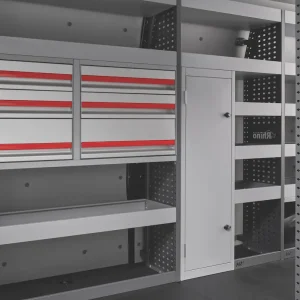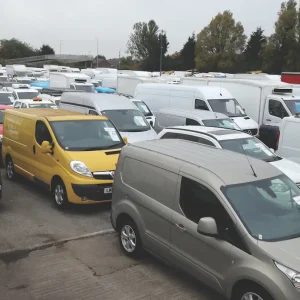Isuzu has built its reputation on supplying reliable, durable, no-nonsense pick-up trucks to working customers like builders and farmers – particularly the latter, with most of its dealerships based in the countryside.
It has dabbled in the UK’s big market for lifestyle pick-ups with a number of special edition D-Max models but has never stood toe to toe with the likes of the Ford Ranger Wildtrak, Volkswagen Amarok Aventura, Nissan Navara Tekna, Mitsubishi L200 Barbarian or Mercedes X-Class. This could be about to change, partly thanks to the withdrawal of the Amarok, Navara, L200 and X-Class from the field, but mainly because of the big leap up in refinement and sophistication Isuzu has made with the second-generation D-Max, which went on sale in March.
The first-generation model was launched in 2012 and given a facelift in 2017, with the most significant change being the introduction of the 164hp 1.9-litre engine, which replaced the old 163hp 2.5-litre lump. This engine remains in the new truck but now requires AdBlue to meet emissions rules.
Isuzu has clarified the previously sprawling D-Max line-up, placing trucks in three categories: Utility, All Purpose and Adventure.
Utility consists of a 4×2 single cab, a 4×4 single cab, an extended cab and a double cab (both 4×4). All of these get a six-speed manual gearbox.
All Purpose encompasses the DL20 extended cab with the manual gearbox and two double cabs, one manual and one with a new six-speed auto transmission, as well as the DL40, comprising manual and auto double cabs.
The ‘DL’ indicates a selectable differential lock, which is designed to deliver better traction off-road than a limited slip differential. The diff lock is standard on all models except Utility.
The Adventure category houses the flagship V-Cross, which is also available with manual or automatic transmissions.
Isuzu has laden the line-up with advanced driver assist systems (ADAS). As standard the new D-Max gets forward collision warning, autonomous emergency braking, traffic sign recognition, which combines with an intelligent speed limiter to alter speeds between zones, and lane departure warning, with a lane departure prevention system that, quite forcefully, adjusts the steering if you attempt to cross lanes without indicating.
All models feature a forward-facing stereo camera that can detect pedestrians, cyclists and vehicles. The camera has two lenses and gauges distance by comparing the two readings – operating in a similar way to a human eye, Isuzu claims. It says the camera can identify objects from 120m away.
Double-cab trucks come with a rear radar that enables additional ADAS features such as a blind spot monitor that detects vehicles in the driver’s blind spot and alerts the driver via an orange warning light in the door mirror. The warning light will flash if the driver indicates to move into the lane where a vehicle is detected. If the driver fails to take action, emergency lane keeping will adjust the steering to prevent the lane change.
Double-cab trucks also get rear cross-traffic alert to detect vehicles approaching from the rear when reversing out of a parking space.
Auto versions come with adaptive cruise control, lane keep assist and pedal misapplication mitigation, which suppresses engine torque and issues a visual and audible warning if the driver suddenly accelerates in front of an object. It works at below 5mph when an obstacle is within 4m to help avoid incidents at low speed – for example, if the driver is parked and selects drive instead of reverse.
The manufacturer has also increased the strength of the D-Max’s ladder chassis with an extra cross member and larger rails to further protect against side impacts. This comprehensive focus on safety has resulted in the new D-Max achieving the maximum five-star Euro NCAP safety rating.
Isuzu puts a marked improvement in ride quality down to reworked leaf-spring suspension and a new chassis cab mount that absorbs more noise, vibration and harshness and enhances comfort in the cab.
Additional features include an integrated step in the rear bumper to ease access to the load area and a tailgate dampener on all double cabs, which ensures the heavy unit lowers gently when unleashed.
Isuzu points out that all double-cab D-Max trucks have a kerb weight of under 2,040kg, unlike the vast majority of its competitors, with the exception of the L200. This means they are subject to passenger car speed limits rather than goods vehicle limits, which are 10mph lower on single and dual carriageways.
Late last year What Van? got to drive a prototype of the V-Cross 6AT on-road but we have now tested the production version both on and off-road.
We remain impressed by the vast improvement in handling and refinement on the tarmac, which is helped by the introduction of a height and reach-adjustable steering wheel (long overdue), speed-sensitive electric steering, which is light in tight spaces but stiffens up steadily as you gather pace, and an eight-way electrically adjustable driver’s seat, making it easy to find the most comfortable driving position.
The V-Cross is an accomplished off-road performer able to cope with extreme conditions.
The 4H four-wheel drive setting is suitable for most slippery surfaces like grass or mud, but when the going gets tough 4L provides drive to all four wheels in a low gear ratio for extra grip in extreme off-road environments.
The rear diff lock can be engaged in 4L when speed is less than 5mph. It provides extra traction at up to 19mph by keeping the left and right wheels on the rear axle turning at the same speed. Functions such as electronic stability control, hill descent control and hill start assist are deactivated when the diff lock is applied.
The new D-Max’s wading depth has increased to a class-leading 800mm, alongside the Ford Ranger, thanks to the breather holes being placed higher. In comparison, the Toyota Hilux has a wading depth of 700mm.
The interior in the V-Cross is a vast improvement on previous flagship D-Max models like the Utah or Blade. Softer plastic adorns the dash, which features a 9in touchscreen, Apple CarPlay and Android Auto. The sound system has eight speakers and leather upholstery covers the steering wheel and seats.
We also drove the DL20 with manual transmission. While this is a competent, well-specified working truck, we would recommend the automatic gearbox over the manual, which betrays its less sophisticated heritage with a long throw between gears and a spindly gear lever that gets less response out of the power on tap. Manual models also lack the adaptive cruise control that comes with the autos.
The DL20 has cloth seats and a six-way manually adjustable driver’s seat. It does not have a touchscreen, unlike the 9in panel on the V-Cross or the DL40’s 7in version. On the other hand, it does come with Bluetooth and DAB radio.
All new D-Max models feature a 4.2in multi-information display on the instrument panel. The screen includes system health checks, infotainment and parking sensors, as well as the usual fuel level, speed and engine temperature readings.
All double-cab models have decent cabin storage facilities, including space under the rear seats, up to 10 cup holders, a compartment in the central armrest and a standard and top glovebox.
The overall length of the new D-Max has been reduced by 30mm due to a shorter nose but the wheelbase has increased by 30mm to give rear seat passengers more legroom.
Of the models on offer, only Utility range trucks roll on steel wheels. The DL20 sports 18in alloys in silver, body-colour bumpers and door mirrors, while the V-Cross comes with 18in gun metal alloys and gun metal body finishes. All double-cab D-Max trucks have a 1.0t-plus payload and can tow 3.5t.
Isuzu D-Max Double-Cab V-Cross 6AT e
Price (ex VAT) £32,759
Price range (ex VAT) 21,009-32,759
Insurance group 50D
Warranty 5yrs/125,000mls
Service intervals 12,000mls
Load length 1,495mm
Load width (min/max) 1,110/1,530mm
Load bay depth 490mm
Gross payload 1,070kg
Engine size/power 1,898cc/164hp
Combined fuel economy 30.7mpg
CO2 241g/km





